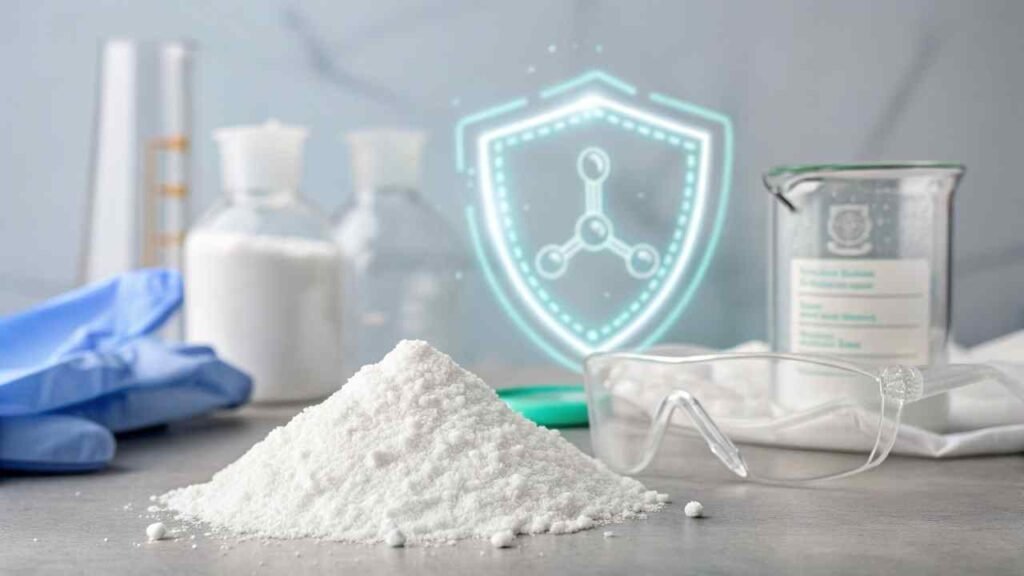Worried about additive safety? Is sodium erythorbate safe for people and Earth? Let's quickly address any concerns you might have.
Sodium erythorbate is deemed safe by top regulators like FDA and EFSA. It's not a common allergen. It's biodegradable, posing low environmental risk when handled right.
At FINETECH, ingredient safety is paramount. Clients need full safety assurance. Let's briefly cover sodium erythorbate's safety for consumers and the environment.
What Do FDA and EFSA Say About Sodium Erythorbate Safety?
What's the official word on sodium erythorbate? What do leading food safety agencies say? Let's check with the FDA and EFSA.
Both the US FDA and Europe's EFSA consider sodium erythorbate safe for its approved uses in food at permitted levels. Decades of use support this.
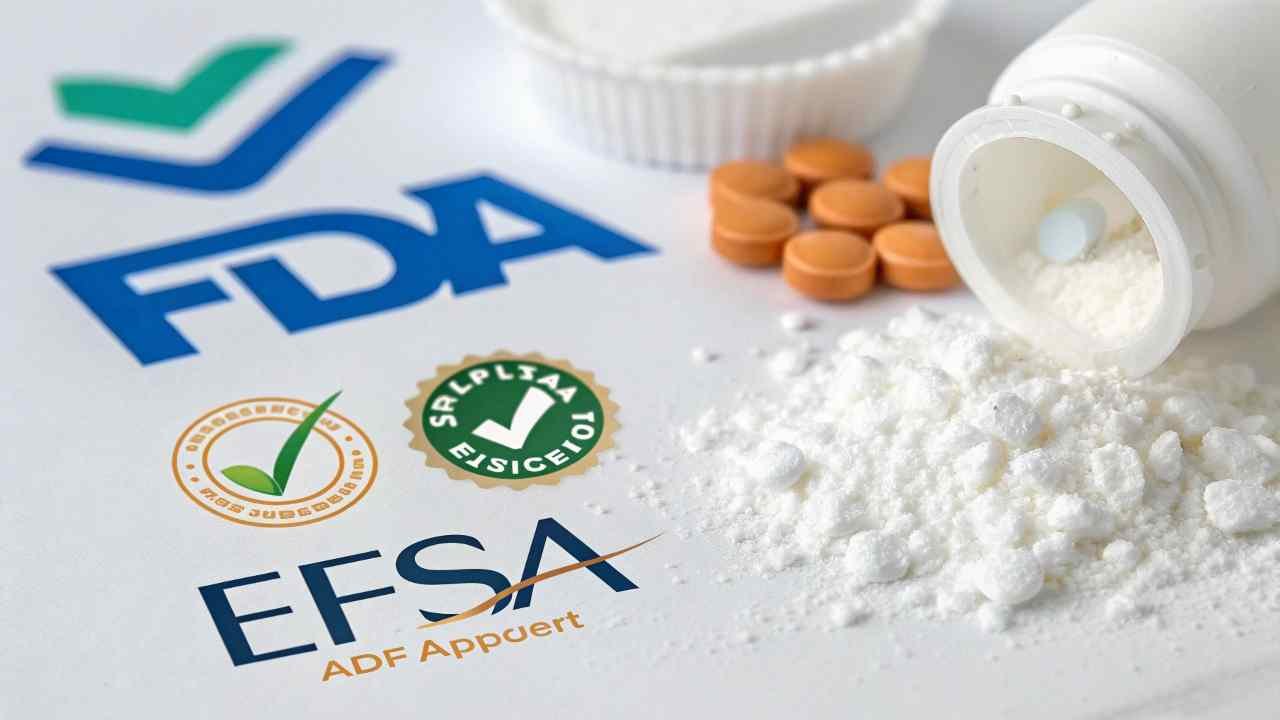
The FDA and EFSA are key global authorities on food additive safety.
- FDA (US): Lists sodium erythorbate as GRAS (Generally Recognized As Safe). It's allowed in foods like cured meats (around 500-550 ppm).
- EFSA (EU): Approves it as food additive E3161. They set an Acceptable Daily Intake (ADI) of 6 mg/kg body weight/day, which is well above typical consumption. Strict purity rules also apply.
Other international bodies like JECFA also agree on its safety. This global consensus2 confirms it's safe when used as directed. FINETECH ensures this compliance for global exports.
Regulatory View:
| Body | Status | Key Point |
|---|---|---|
| FDA | GRAS | Safe for intended use |
| EFSA | Approved (E316) | ADI set, purity rules |
| JECFA | ADI Set | International scientific agreement |
Can Sodium Erythorbate Cause Allergic Reactions?
Could sodium erythorbate trigger allergies? Is it a common concern? Let's look at its allergenic potential.
Sodium erythorbate is not a common food allergen. True allergic reactions are very rare. Some people might report sensitivity, but it's not a major listed allergen.
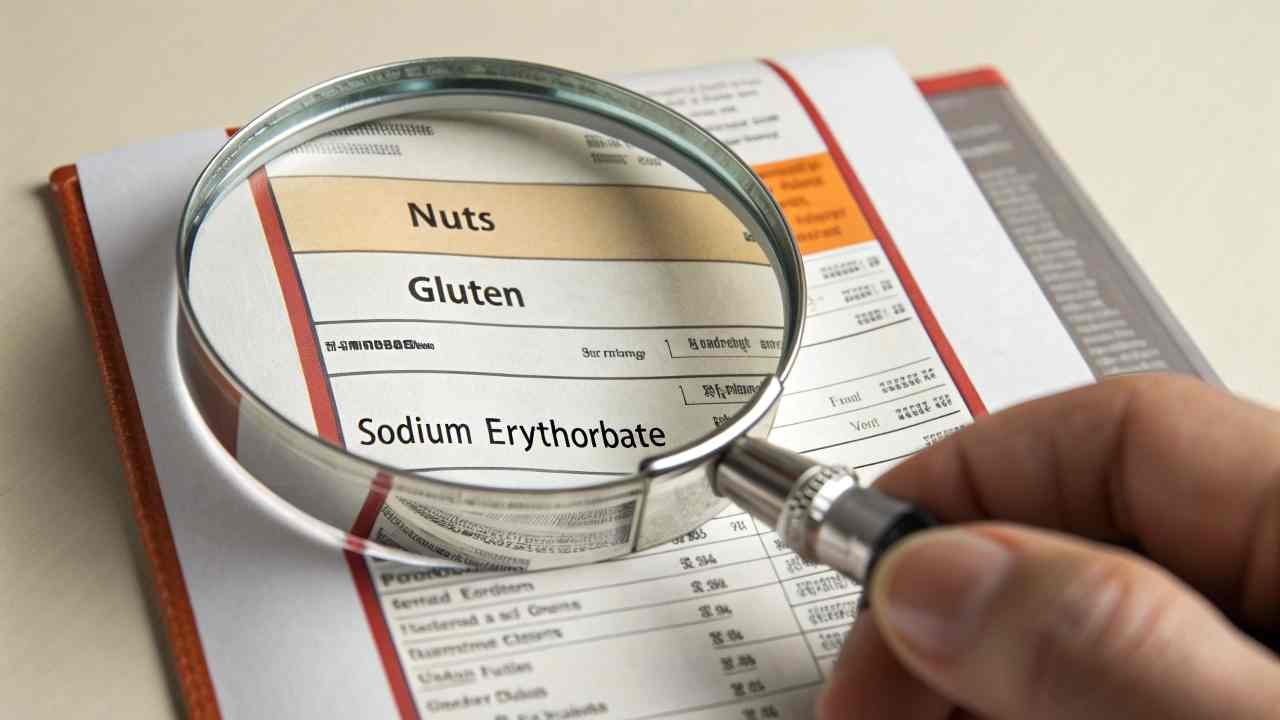
Sodium erythorbate is a simple chemical, not a protein like major allergens (peanuts, milk, etc.). It's not on mandatory allergen lists.
While true allergies are rare, isolated reports of sensitivity (e.g., headache, mild GI upset) exist but are not typical. Importantly, it is NOT a sulfite and doesn't cause sulfite reactions3. For most people, it's well-tolerated. FINETECH ensures high purity to minimize any risk.
Allergen Quick Check:
| Aspect | Sodium Erythorbate Status | Implication |
|---|---|---|
| Major Allergen? | No | No mandatory allergen label |
| Reactions? | True allergies very rare | Generally well-tolerated |
| Sulfite? | No | Not a sulfite concern |
How Is Sodium Erythorbate Different from Vitamin C?
Are sodium erythorbate and Vitamin C the same? How do they relate? Let's clarify their differences and similarities.
Sodium erythorbate is a stereoisomer of sodium ascorbate (Vitamin C salt). They share antioxidant functions, but erythorbate has almost no Vitamin C nutritional activity and is usually cheaper.
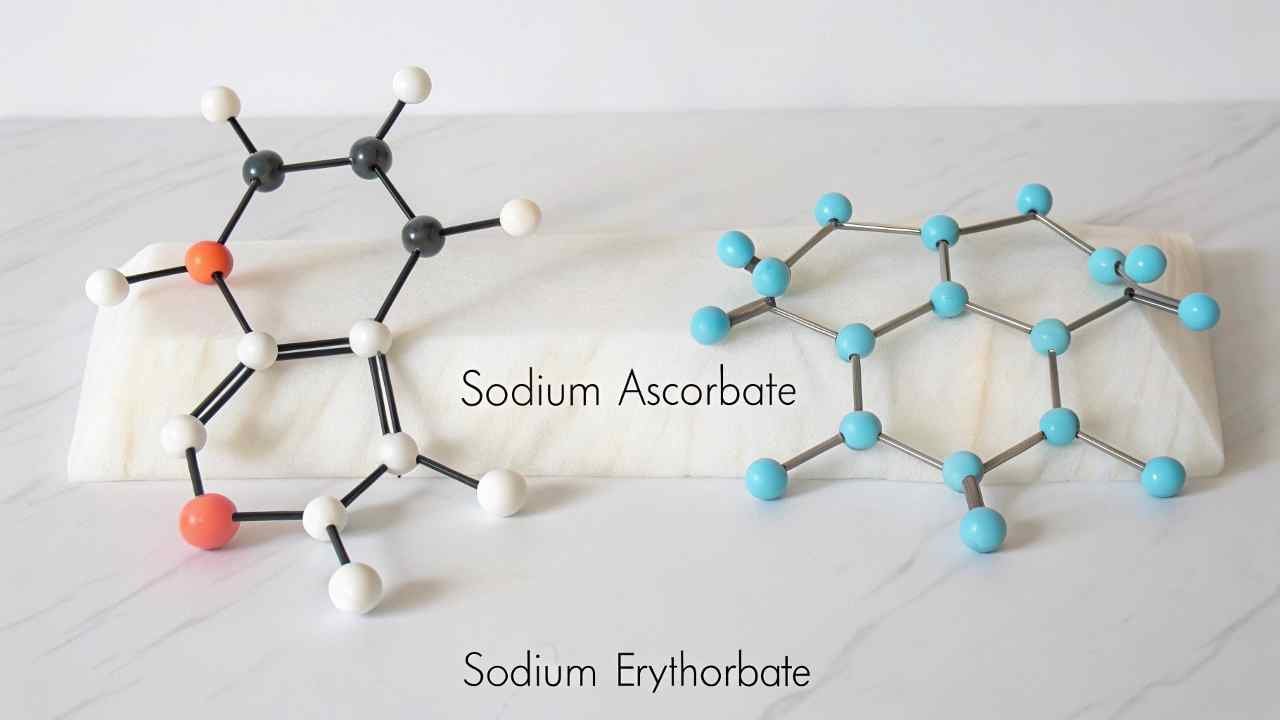
Erythorbic acid and ascorbic acid (Vitamin C) are stereoisomers – same formula, different 3D shape. Sodium erythorbate and sodium ascorbate are their respective sodium salts.
Similarities:
- Both are effective antioxidants in food, preventing rancidity and color fade.
- Both accelerate cure in meats.
Key Difference:
- Vitamin C Activity: L-ascorbic acid (Vitamin C) is an essential nutrient. D-isoascorbic acid4 (erythorbic acid) has negligible (≤5%) Vitamin C activity. So, sodium erythorbate is NOT a source of Vitamin C.
- Cost: Sodium erythorbate is generally cheaper, making it preferred for technical antioxidant use where nutrition isn't the goal.
Comparison:
| Feature | Sodium Erythorbate | Sodium Ascorbate (Vit C) |
|---|---|---|
| Vit C Activity | Negligible | Yes (100%) |
| Main Food Use | Antioxidant | Antioxidant, Nutrient |
| Cost | Lower | Higher |
FINETECH supplies both; choose based on need (technical vs. nutritional).
What Are the Storage Requirements for Sodium Erythorbate?
How should you store sodium erythorbate to keep it good? What are the best conditions? Let's cover proper storage.
Store sodium erythorbate in a cool, dry, dark place. Keep containers tightly sealed to protect from moisture, light, heat, and air, which can degrade it and reduce its effectiveness.
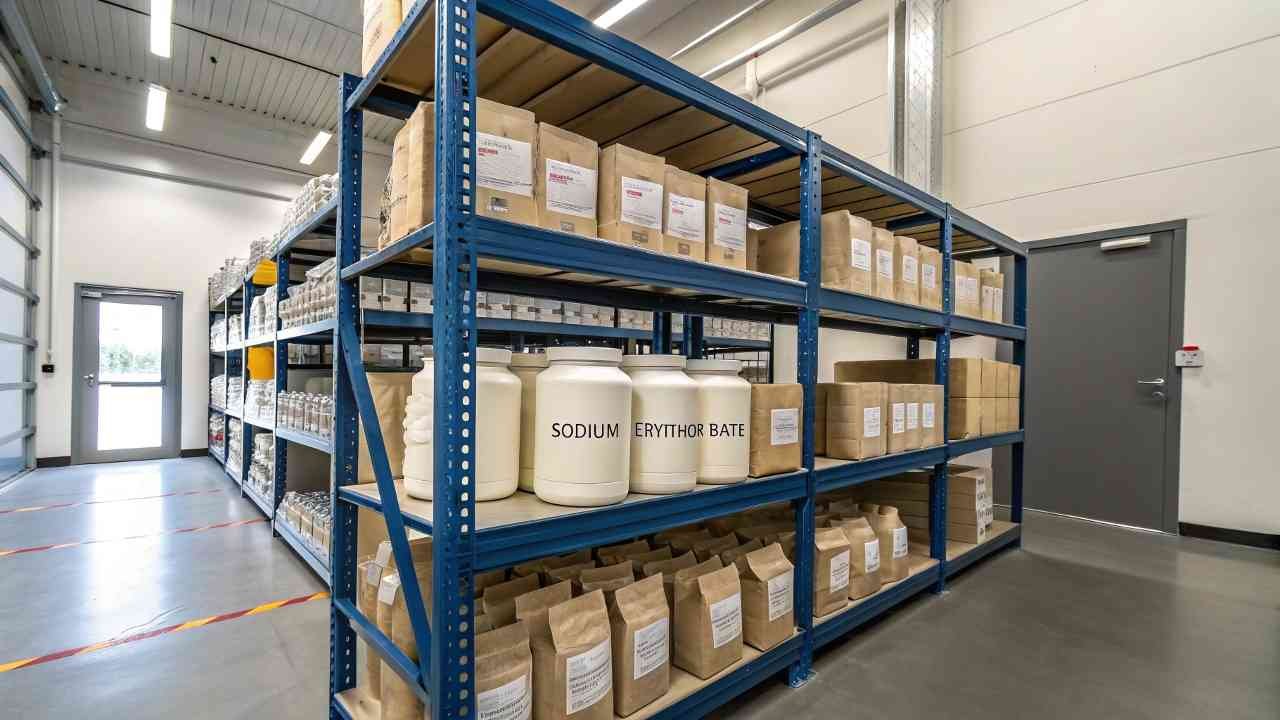
Proper storage is key to maintain sodium erythorbate's quality. It's a stable powder if handled well, but can be damaged by:
- Moisture: Causes caking.
- Light/Heat/Air: Cause degradation, loss of antioxidant power.
Recommendations:
- Temperature: Cool (below 25°C / 77°F).
- Humidity: Dry.
- Light: Dark storage, opaque containers.
- Containers: Original, tightly sealed. Reseal promptly.
Shelf life is typically 1-2 years under ideal conditions. Always check the supplier's expiry date. FINETECH ensures proper initial packaging.
Storage Tips:
| Condition | Recommendation | Why |
|---|---|---|
| Container | Tightly sealed | Protect from air, moisture, light |
| Temperature | Cool, not extreme | Slow degradation |
| Light | Dark | Prevent photo-oxidation |
How to Ensure High-Quality Sodium Erythorbate for Food Use?
Need reliable sodium erythorbate? How to ensure top quality? Let's outline key quality checks.
Get high-quality sodium erythorbate from trusted suppliers like FINETECH. Verify it meets food-grade standards (FCC/E316). Check the Certificate of Analysis (CoA). Inspect packaging and appearance on arrival.
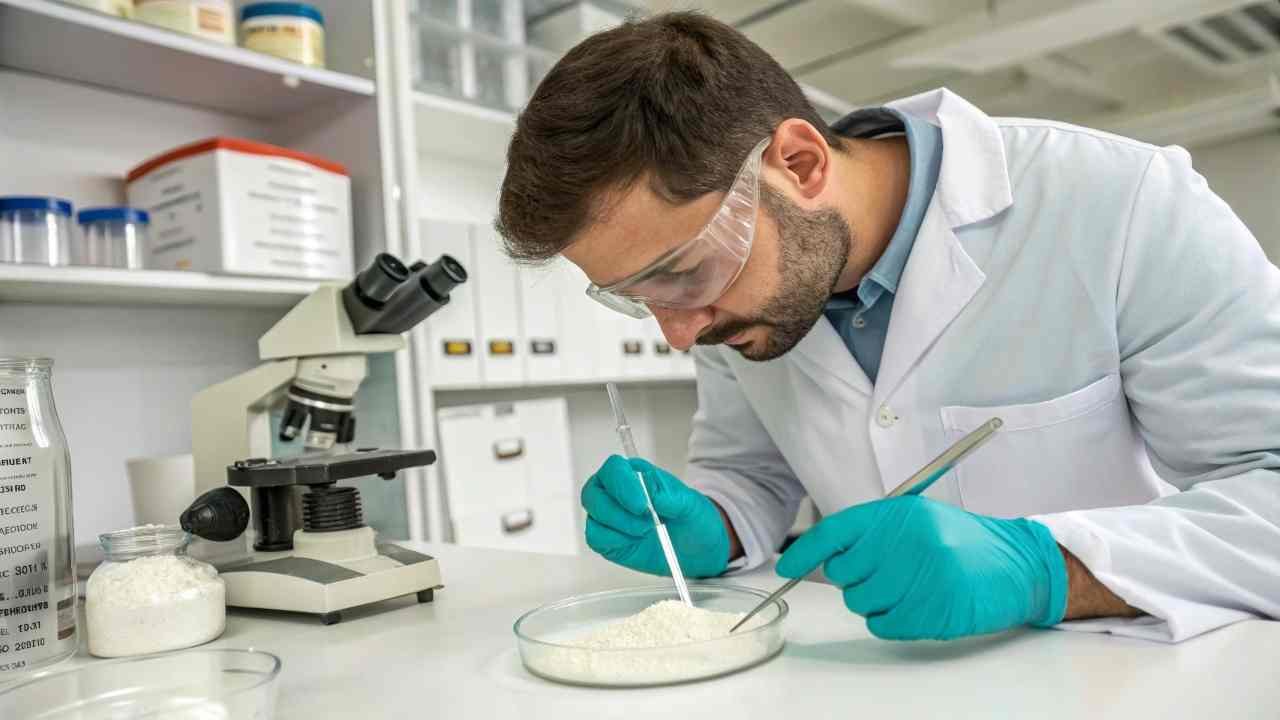
The quality of any food additive directly impacts the quality and safety of the final food product. For an ingredient like sodium erythorbate, which plays crucial roles in color, flavor, and stability, sourcing high-quality material is paramount.
Steps for Quality Assurance:
- Reputable Supplier: Choose experienced suppliers with good quality systems.
- Food-Grade Standards5: Ensure it meets FCC (US), E316 (EU), or equivalent specs.
- Certificate of Analysis (CoA): Review this batch-specific document for purity, heavy metals, etc., confirming it meets specs.
- Inspect on Arrival: Check packaging is intact and product looks right (white, crystalline, odorless).
- Consider Certifications: Kosher, Halal, or GFSI-recognized food safety certs can add assurance.
Quality Checklist:
| Aspect | Check For | Importance |
|---|---|---|
| Supplier | Reputation, Quality Systems | Reliability, Consistency |
| Grade | FCC / E316 Compliance | Safety, Suitability for Food |
| CoA | Within-spec results for each batch | Proof of Quality |
| Packaging | Intact, Sealed, Proper Labeling | Product Protection, Info |
| Appearance | White, Crystalline, Odorless | Visual Quality Check |
Conclusion
Sodium erythorbate is safe for consumers, approved globally, and not a common allergen. Understand its difference from Vitamin C and store it properly for best quality.
-
Exploring food additive E316 provides insights into its applications and safety in the food industry. ↩
-
Understanding global consensus can help you grasp how international agreements shape food safety regulations. ↩
-
Learn about sulfite reactions to better understand their impact on health and how to avoid them. ↩
-
Learn about D-isoascorbic acid and its differences from Vitamin C to better understand its role in nutrition and health. ↩
-
Exploring food-grade standards helps ensure compliance and safety in food products, crucial for any supplier. ↩

